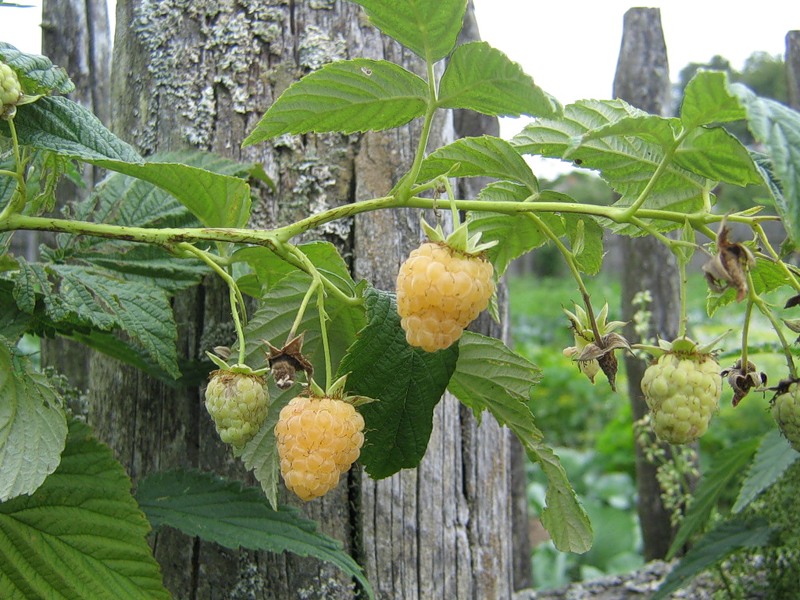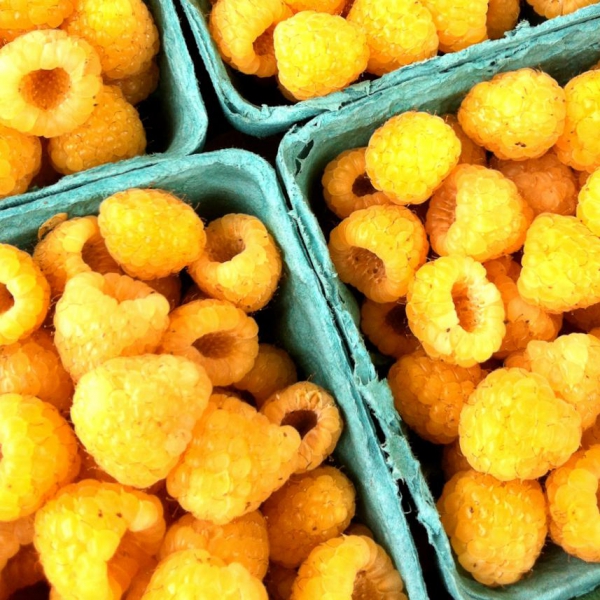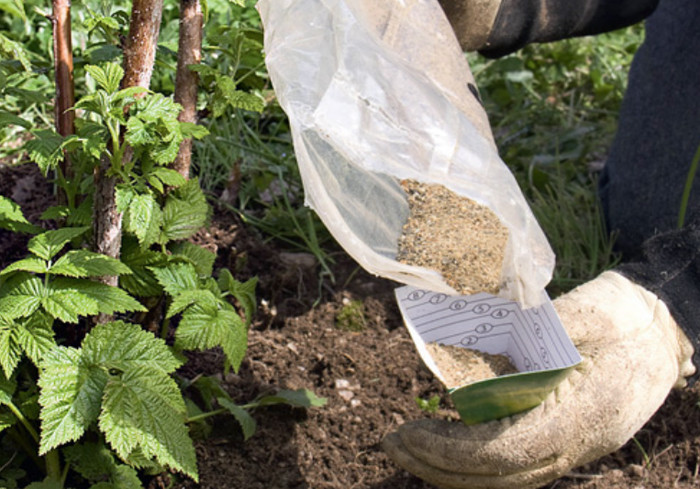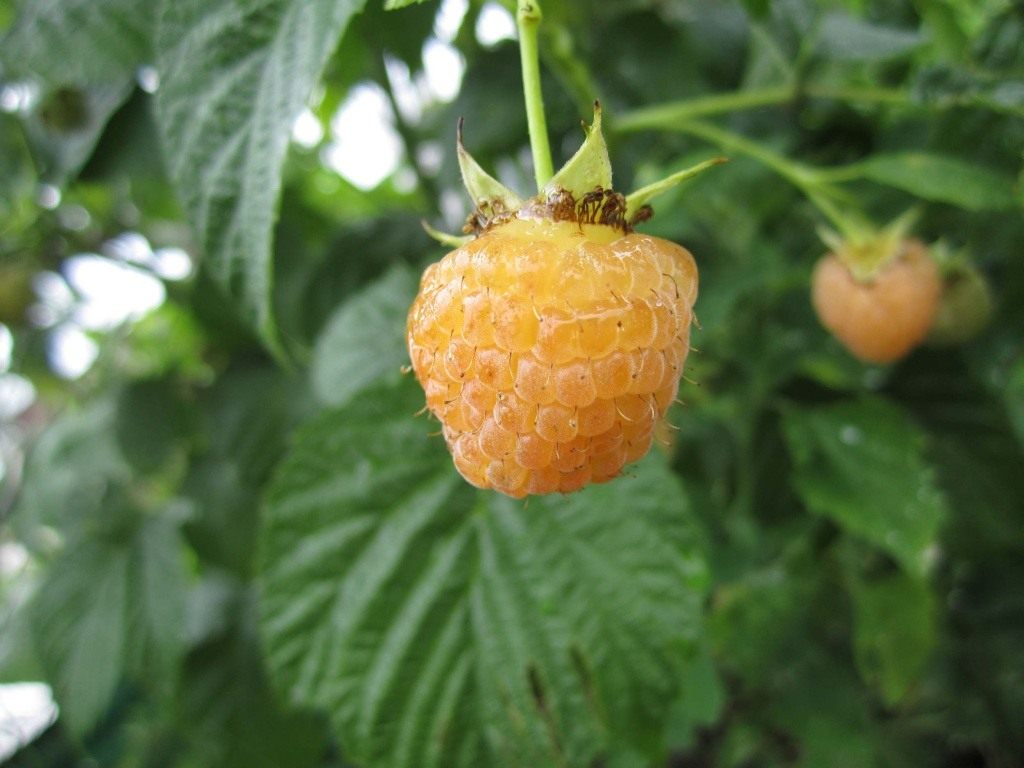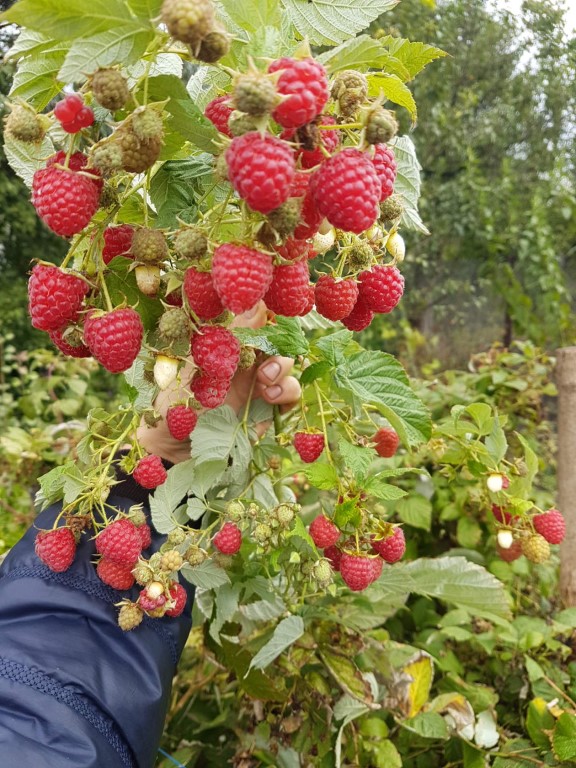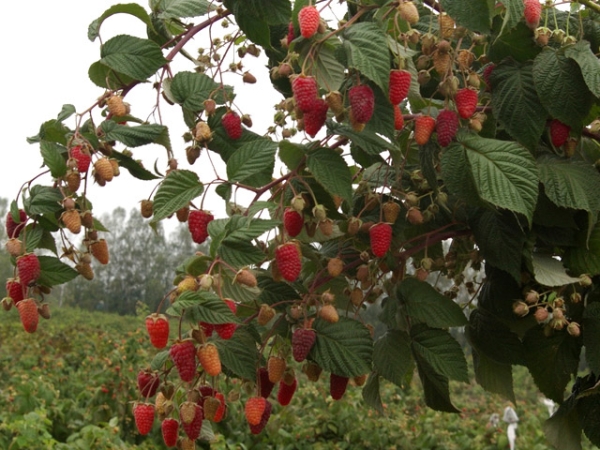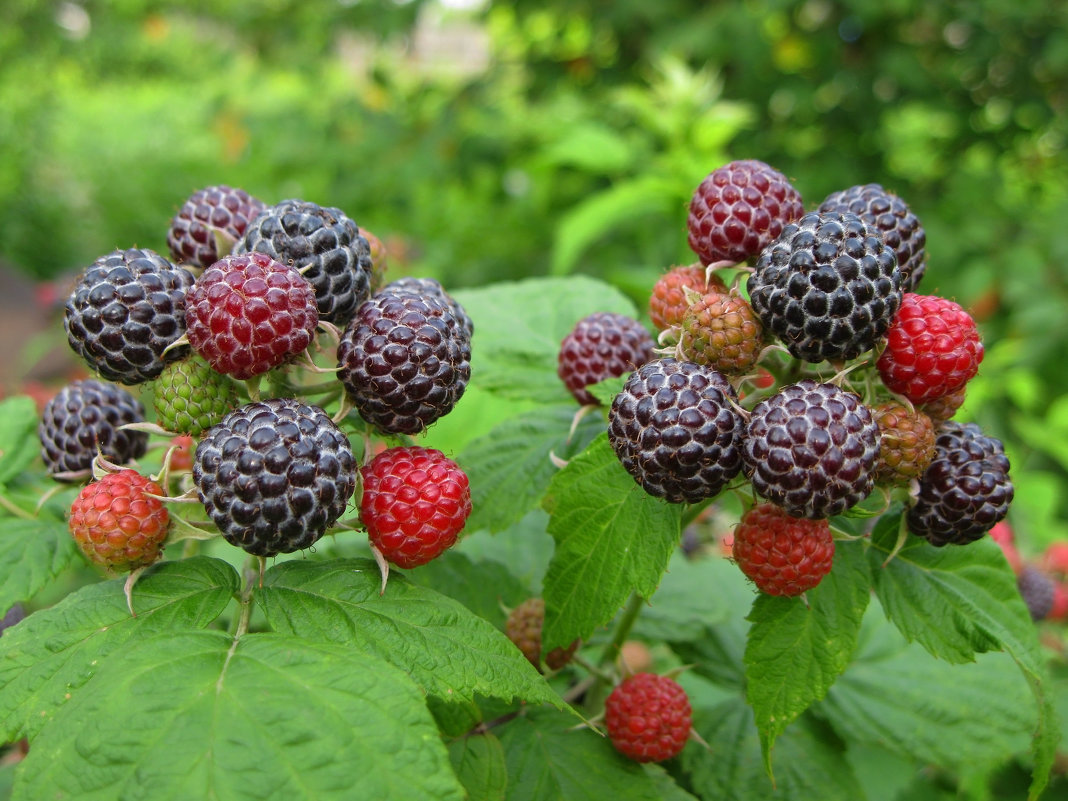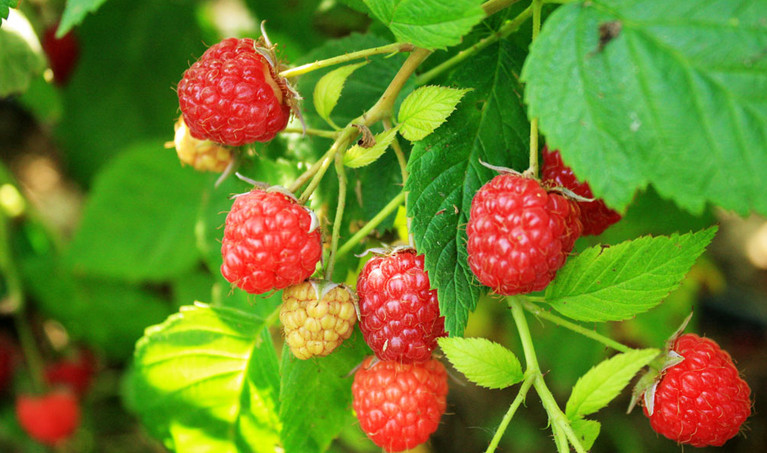Content:
Yellow raspberries are among the most unusual representatives of fruit and berry crops. It is not common in our garden plots, although those who want to plant a yellow raspberry species have a fairly wide selection of varieties.
Breeders have bred a considerable amount of yellow raspberries. Let's consider the most curious of them.
Review of popular varieties
Yellow giant
Raspberry Yellow giant belongs to the semi-renovated and mid-early. Fruiting twice a year (again in the fall). This type of berry is considered the sweetest in taste. There is almost no sourness in it. The weight of the berries justifies the name of varietal raspberries - they are really large - up to 9 g. The fruits have a golden hue, are distinguished by the density of the pulp and have a rich aroma. The shrub grows up to two and a half meters in height and has no thorns. The plant without fail requires a garter. You can collect at least 4 kg of berries from a bush. It is resistant to insects and diseases, characterized by a decent indicator of frost resistance.
Morning dew
Raspberry Morning dew or, as it is also called, Porana dew raspberry is a variety that is grown primarily for industrial purposes. The berry of this variety weighs from 5 to 10 g and has a strong aroma, somewhat like a dome in shape. The raspberry bush grows up to 1.8 meters and has powerful shoots. The Morning Dew variety does not require special care, it gives an excellent harvest.
Yellow Sweetheart
The main feature of Slasten's raspberry is its high resistance to pests and various diseases. Otherwise, this varietal non-remontant type of raspberry has a fairly average performance. The plant tolerates winter well, but subject to proper insulation. The berries are white-yellow or apricot. Their weight is 3-6 grams. For transportation over long distances, they are completely unsuitable. Productivity in many respects depends on the region of planting and care and ranges from 3 to 8 kg per bush.
Yolk
Raspberry Yolk, in accordance with the description of the variety, has very large, even giant berries. Their size is comparable to that of a walnut. The shrub is distinguished by strong branches, each of them ripens at least twenty berries. Fruit color is deep yellow. The berries are very sweet, with a strong aroma and tender pulp.
The bush grows up to 2.5 meters and has good resistance to transportation. The variety prefers loamy and light fertile soil. Raspberry Yolk does not need special care. But in order to get an enviable harvest, the plant must be planted in sunny places, reliably protected from the winds.
Pineapple Vigorova
Pineapple raspberry is not a remontant, but at the same time a fairly productive variety. This variety began to be called that way because the berries, after ripening, taste a little like pineapple.
Bushes can grow up to two meters in height. Shoots are straight and not prone to strong growth. The average berry weight is 4-5 grams. The seed (drupes) are not held too tightly.
Useful properties of yellow raspberries
Raspberries are yellow-fruited, regardless of the variety, sweeter than the traditional red. This is due to the fact that it contains fewer acids.
Since there are few colorants (anthocyanins) in yellow fruits, they are suitable for use by pregnant women, young children and allergy sufferers.
In addition, berries are characterized by a high content of folic acid, which cleanses the blood and strengthens the immune system.
Care
Care for yellow raspberries is required approximately identical, regardless of belonging to any variety.
Top dressing
If the trench method was used for planting the berries, fertilization can be forgotten for several years. In all other cases, additional soil enrichment will be required.
In early spring, immediately after the snow melts, nitrogen compounds are introduced. The first two years, fertilizers are placed as close to the bushes as possible, and then, evenly distributed over the row. The best nitrogen fertilizer is urea, diluted in water in a ratio of 50 g of powder per 10 liters of water. One liter is enough for one shrub.
In the summer, you can use complex formulations. Autumn is the time for feeding with manure and ash. Autumn feeding is not done every time, but with an interval of 2 years.
Watering
No matter what sort of raspberry you are talking about: black Cumberland, raspberry Kirzhach or one of the described types of yellow raspberries, sufficient attention should be paid to watering the plant.
If berries are grown in southern regions, the number of waterings during the growing season should be up to 8 times. In the middle lane, this figure is lower. If the summer is rainy, just a couple of waterings are enough, and in sunny dry weather - four.
On a note. It is recommended to water the raspberry by sprinkling or along furrows.
Garter
If the variety of yellow raspberries selected for planting requires a garter, for 2 years after planting, you will need to put up the posts and pull the trellis. Usually we are talking about two rows of rope or wire, at a height of just over half a meter and a little less than 1.5 meters.
Important! Garter raspberry bushes is done before bud break.
Pruning
You will not be able to do without trimming the shrub to get a decent harvest. Repaired species are manipulated immediately after the end of fruiting. Shoots that have finished bearing fruit are removed. If pruning is done in early spring, the whole bush is cut off. With autumn pruning, new shoots have the opportunity to strengthen and give a good harvest for the next year. Spring - will cause the plant to skip the first period of fruit emergence, but produce more berries at the end of the season.
Interesting. When starting the cultivation of remontant varieties, one should not forget that they do not tolerate thickening very well, and therefore they must be thinned periodically.
Shelter for the winter
Most varieties of yellow raspberries are cold resistant. But if in winter the air temperature drops below -20 degrees, you should still worry about the safety of the raspberry tree. For this purpose, the raspberry tree is bent along the row and tied in such a way that it rises no more than 40 centimeters above the ground. In especially harsh regions in terms of climate, it is additionally allowed to cover the plantings with straw or dust it with earth.
This is not to say that the taste characteristics of yellow raspberries are very different from ordinary ones. But, due to its non-standard appearance, it attracts attention and is in high demand.
